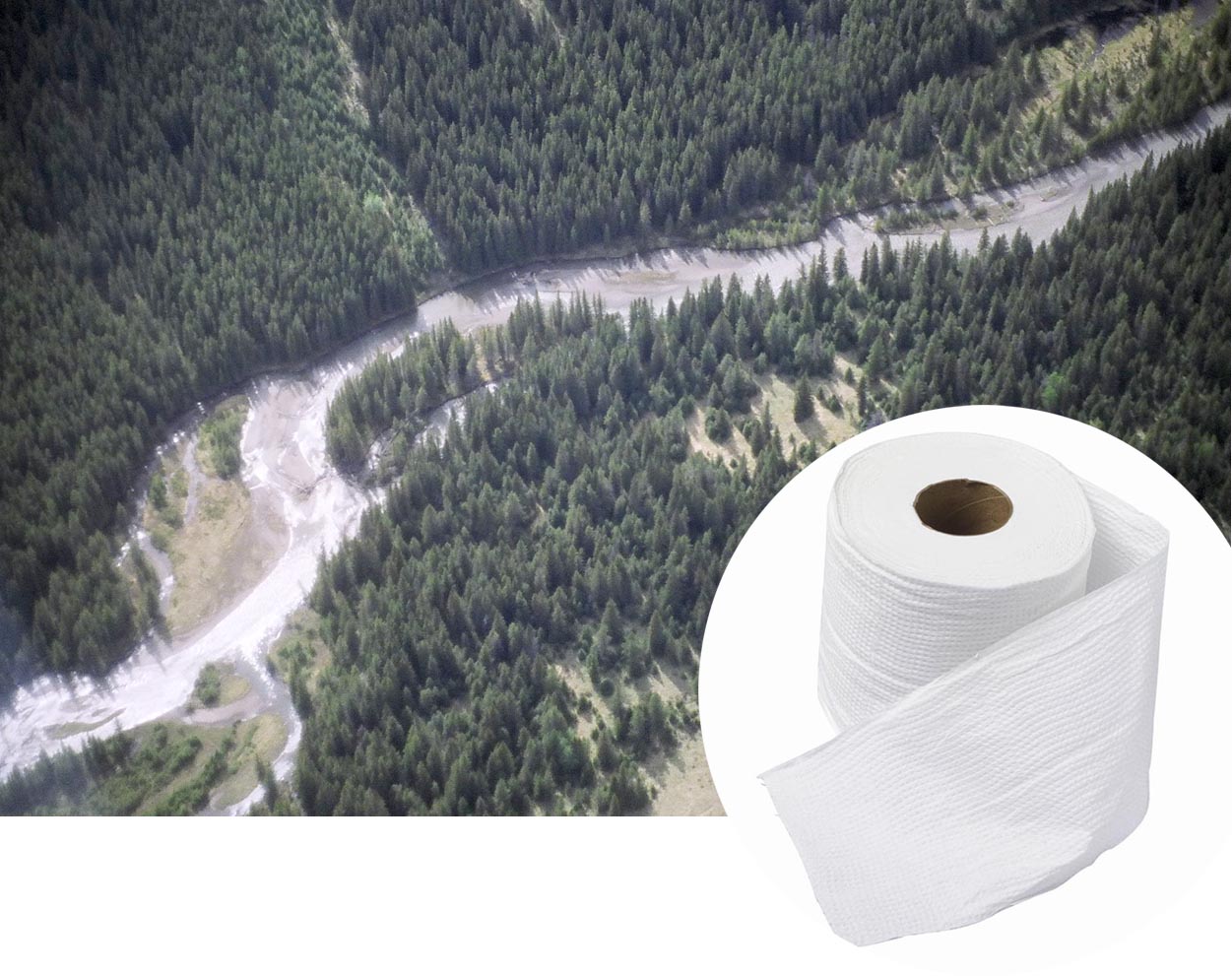 Dear EarthTalk: Are any major brands of disposable tissues, paper towels, napkins and toilet paper yet using recycled content and chlorine-free bleaching? — Sylvia Comstock, Montpelier, VT
Dear EarthTalk: Are any major brands of disposable tissues, paper towels, napkins and toilet paper yet using recycled content and chlorine-free bleaching? — Sylvia Comstock, Montpelier, VT
Not many. In fact, some of the biggest names in disposable paper products are the worst offenders. According to the nonprofit Natural Resources Defense Council (NRDC), forests at home and abroad are being destroyed to make toilet paper, facial tissues, paper towels and other disposable paper products. Giant paper producers such as Kimberly-Clark (Scott, Cottonelle, Kleenex and Viva) and Procter & Gamble (Puffs, Charmin and Bounty) are, in the words of NRDC, “forcing the destruction of our continent’s most vibrant forests, and devastating the habitat for countless wildlife species in the process.”
Much of the virgin pulp used by these large manufacturers comes from Canada’s boreal forest. Some 500,000 acres of boreal forest in Ontario and Alberta alone—key habitat for caribou, lynx, wolves and scores of birds—are felled each year to provide pulp for disposable paper. Beyond wildlife concerns, Canada’s boreal forest, which stretches from coast to coast, comprises perhaps the world’s largest terrestrial storehouse of carbon dioxide, so it is critical to keep it intact to help mitigate global warming.
Kimberly-Clark uses some 1.1 million cubic meters of trees from Canada’s boreal forests each year to produce 465,000 metric tons of pulp. Only 19 percent of the pulp it uses to make home use disposable paper products comes from recycled sources. Some of its brands, including Kleenex and Scott, contain no recycled content whatsoever. Nor do Procter and Gamble’s Bounty, Charmin or Puffs, says NRDC.
Another issue with tissue (and paper overall) is the use of chlorine for whitening. Chlorine used in many bleaching processes contributes to the formation of dioxins and furans, chemicals that end up in our air and water and can cause cancer. Safer processes use oxygen compounds and result in paper that is “totally chlorine free,” “process chlorine free” (chlorine free except for recycled fibers that were previously chlorine-bleached) or “elemental chlorine free,” which substitutes safer chlorine dioxide for chlorine.
NRDC and other groups are pressuring the tissue products industry to change its ways, and are working to educate consumers about their options when buying tissue paper products. NRDC’s online “Shopper’s Guide to Home Tissue Products” offers reams of free advice on which brands to look for—and which to avoid. Marcal is the only household name that NRDC rates high on paper sourcing (100 percent recycled and 40 to 60 percent post-consumer content) and chlorine use (process chlorine-free). Brands ranking highest (up to 80 percent post-consumer content and process-chlorine free) include 365 (the Whole Foods brand), Seventh Generation, Earth First, and Planet, among others. No brands are totally chlorine free.
In general, consumers should seek out brands that specifically tout use of 100 percent recycled materials with a high percentage (40 percent or more) of post-consumer waste, and not just keywords like “green” or “eco” on their labels, which may be misleading. Also, before you even purchase that next roll of disposable paper think about how you can reduce the amount you use in the first place. Paper tissues, towels and napkins, for example, have re-usable options in handkerchiefs and cotton towels and napkins.
CONTACTS: NRDC Shopper’s Guide to Home Tissue Products, www.nrdc.org/land/forests/gtissue.asp; Kimberly-Clark, www.kimberly-clark.com; Procter & Gamble, www.pg.com.
GOT AN ENVIRONMENTAL QUESTION? Send it to: EarthTalk, c/o E/The Environmental Magazine, P.O. Box 5098, Westport, CT 06881; submit it at: www.emagazine.com/earthtalk/thisweek/, or e-mail: [email protected]. Read past columns at: www.emagazine.com/earthtalk/archives.php.








